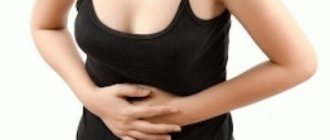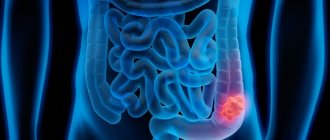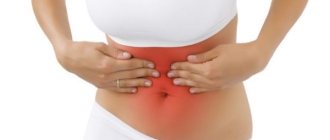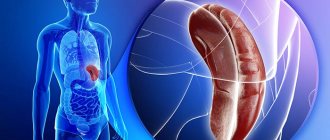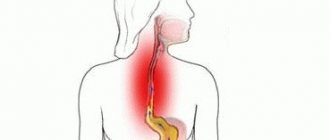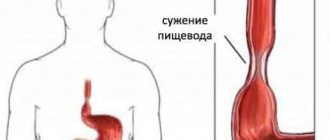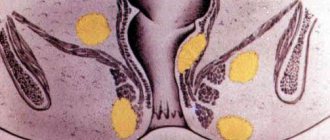Steatorrhea - what is it?
Steatorrhea is the excessive secretion of lipids during bowel movements . The norm for fat loss along with feces per day is 7 g. With losses of more than 15 g, we can already talk about a violation.
There are three types of disease:
- The first is the appearance of neutral lipids in the stool.
- Type 2 steatorrhea is characterized by the presence of fatty acids in the stool.
- The third type is combined, has the characteristics of the first two.
The disease code according to ICD-10 is K90 “Impaired absorption in the intestine.”
Feces neutral fat
Neutral fat in the coprogram is an indicator of the functioning of the pancreas, liver, bile ducts and digestive processes in the small intestine. A small amount of it is allowed in the feces of infants due to the insufficient development of their enzyme system. Older children and adults normally should not have any fat in their stool.
Neutral fats are called esters of fatty acids and glycerol. Depending on how many hydroxyl groups of glycerol are esterified with fatty acids, the following types of lipids of this group are distinguished:
- triglycerides – three groups;
- diglycerides – two groups;
- monoglycerides are one group.
Neutral fat is found in the human body in the form of reserve material or becomes protoplasmic fat, which is part of the cells. The role of these forms is different. Protoplasmic lipids have a constant composition and exist in cells in a certain amount, which does not change with the development of obesity or in the case of a person losing weight. The amount of reserve fat tends to fluctuate.
Neutral fat is a significant source of energy and is almost completely broken down in the body of a healthy person. Fats are necessary for the absorption of fat-soluble vitamins, are a reserve nutritional material, protect internal organs from shocks, and the body as a whole from cooling. Absorption of neutral fat is impossible without the influence of bile acids and pancreatic enzymes.
Insufficiency or disturbances in digestion lead to the fact that, in addition to neutral fat, when analyzing stool, it is possible to determine the products of its breakdown - fatty acids. In adults they are present in feces. Soaps are residues from the digestion of fats and are found in small quantities in feces. If there are none or their number is increased, it means that there is dysfunction of fat processing in digestion (pancreatitis, diseases of the gallbladder and liver), fermentative dyspepsia or impaired absorption in the intestine.
Classification and causes
Often the disease occurs against the background of exocrine pancreatic insufficiency and is its indirect sign. The most serious causes of steatorrhea lie in the development of celiac disease, a hereditary disorder in the absorption of gluten.
Important! Sometimes fatty stool in an adult is of a medicinal nature if an obese patient is prescribed drugs that block the absorption of lipids from food. This is the most harmless reason according to the development mechanism. A person’s well-being returns to normal after stopping the medication.
By origin, the disease can be primary or secondary . In the first case, there is a pathology that arose as an independent phenomenon (idiopathic pancreatic steatorrhea, genetically determined deficiency in the production of the lipase enzyme, or congenital dysplasia, hypoplasia or aplasia of the pancreas).
Steatorrhea
Diagnosis of steatorrhea is carried out by a gastroenterologist and is not difficult, which is explained by the characteristic appearance of feces. The diagnostic search is aimed at a comprehensive laboratory and instrumental examination of the patient in order to detect the causes of the pathological condition. The most informative research methods are:
- Stool microscopy.
For steatorrhea, the detection of drops of neutral fats and fatty acids during scatological examination is pathognomonic. The severity of the syndrome is judged by the number and size of fat droplets: less than 100 inclusions with a diameter of up to 8 microns - average activity, more than 100 large droplets - a severe variant of the disease. - Endoscopic examination.
Retrograde cholangiopancreatography allows you to identify signs of various diseases. The study determines spasm of the sphincter of Oddi, blockage of the bile ducts with stones, narrowing or inflammatory processes in the pancreatic ducts. - Sonography
. Abdominal ultrasound is used to quickly detect pancreatic and biliary pathologies. Ultrasound with steatorrhea may reveal heterogeneity in the structure of the pancreas with alternating areas of hyper- and hypoechogenicity, thickening of the walls of the gallbladder, and gallstones in the ducts. - Secretin-pancreozymin test
. Collection of duodenal contents after intravenous infusion of secretin and pancreozymin is used to assess indicators of exocrine pancreatic function. Functional failure is indicated by a decrease in secretion volume less than 185 ml/h and a decrease in amylase activity.
A general blood test may reveal slight leukocytosis and an increase in ESR. With prolonged steatorrhea, a biochemical blood test reveals significant hypoproteinemia, mainly due to albumin, and dysproteinemia. There is a decrease in the level of basic blood electrolytes (sodium, potassium, calcium, magnesium, iron). For the purpose of non-invasive study of exocrine pancreatic secretion, a breath test with triglycerides labeled with 14C is used.
In case of steatorrhea, it is necessary to carry out differential diagnosis between two main groups of causes of this disease: diseases of the pancreas and biliary system. Pancreatic pathology is indicated by a decrease in enzyme test values, an increase in fecal elastase and ultrasound signs of inflammation of the organ. The main criterion for diagnosing biliary tract pathology is sonographically or radiographically confirmed stones. A hepatologist may be involved in counseling the patient.
Symptoms and signs
Symptoms appear immediately and are difficult to miss . After defecation, you can see that the stool has acquired a bright and oily sheen. Such feces are difficult to wash off and leave behind shiny marks.
In addition to the main symptom, symptoms of malaise appear : the patient feels a loss of strength and is tormented by dizziness. The functions of the gastrointestinal tract are disrupted: a person is tormented by flatulence and rumbling in the stomach.
Over time, complaints of dry mouth and mucous membranes appear . Anorexia develops against the background of normal nutrition and general satisfactory health, as the patient loses weight. He is often bothered by constant thirst, bloating and stomach pain.
It can be useful:
Diagnosis and treatment methods for IBS
Symptoms and treatments for IBS
Folk remedies for the treatment of IBS
Features and classification
Steatorrhea is a field of study in modern gastroenterology and refers to diseases of the intestines and gastrointestinal tract. The main symptoms of the disease include a frequent urge to defecate, while fecal stool is always abundant and leaves a greasy, oily residue on the child’s potty or in the toilet. In children, steatorrhea is often accompanied by severe diarrhea, which leads to rapid exhaustion and dehydration. The classification of pathology makes it possible to separate steatorrhea from other causes of loose stool mixed with mucus or fat, and also to quickly begin restorative therapy. So, steatorrhea - what is it? There are two main classifications: by type of course, by form of manifestation.
By type of flow
Classification of the disease according to the type of course characterizes the localization of the lesion, etiological factors, damage to internal organs and intestines:
- Food type. The disease develops against the background of excessive consumption of vegetable and animal fats. The mucous membranes of the stomach and its microflora are not able to digest fatty acids, excreting them undigested.
- Intestinal type. The pathology is characterized by severe damage to the walls or mucous membrane of the stomach and rectum, which, due to weakness, are not able to absorb and assimilate fatty components.
- Pancreatic type. The disease is characterized by weakness of the pancreas, when the organ is not able to secrete the required volume of enzymes for emulsification, breakdown and separation of fats.
Depending on the type of course, the disease occurs the same in children and adults. Another special classification is the distribution of the disease according to the form of manifestation.
According to the flow form
Clinicians conventionally classify the disease into three main forms:
- the content of neutral fats in feces (the pathology does not pose a particular danger);
- presence of fatty acids in feces:
- the presence of neutral and acidic fats at the same time.
In three cases, the patient can easily determine the fat content of stool by the mark left on the toilet after a bowel movement. Fatty feces are difficult to wash off with cold water.
Important! Parents can conduct a thorough analysis of their child’s stool, assess not only the frequency of urges, but also describe to the doctor the structure, color, fat content of the stool, and other changes in the child’s condition at the time of diarrhea.
Diagnostics
Primary diagnosis involves taking a medical history . First, the therapist or gastroenterologist asks the patient about the nature of the complaints: how long ago the oily stool appeared, whether there are any other complaints and concomitant diseases. Next, he will find out what medications were taken previously, and whether relatives have similar disorders.
After collecting anamnesis, the patient undergoes a series of laboratory tests (coprogram, general and biochemical blood and urine tests). Ultrasound diagnostics and colonoscopy may be required.
Treatment methods
How to treat this disease? Therapy depends on the severity of symptoms and the presence of concomitant diseases . If the pathological condition threatens the patient’s life, it is necessary to adjust the diet and take medications aimed at eliminating the symptoms.
Conservative
If an adult has loose, greasy stools, antidiarrheals are used . It is recommended to prescribe Loperamide or Smecta, as they practically do not cause side effects. In case of severe dehydration, intravenous drips based on saline or Ringer's solution are placed in the hospital.
To facilitate the work of the pancreas, enzyme preparations are prescribed . Proton pump inhibitors or antacids are used to prevent heartburn. To maintain health, essential omega-3 acids, complexes of fat-soluble vitamins, as well as cyanocobalamin, folic acid, calcium, iron, and magnesium are prescribed as a supplement to the basic diet.
For flatulence, medications based on simethicone are prescribed . It is advisable to use probiotics to normalize the state of intestinal microflora.
Diet
The basis of disease therapy is choosing the right diet . Nutrition for steatorrhea is aimed at limiting lipids and fiber. You also need to drink a lot of water and give up bad habits (exclude smoking, alcohol).
The list of permitted products includes:
- baked pears, apples;
- vegetable soups;
- compotes, jelly;
- cereal-based porridges;
- fermented milk products (except for full-fat cottage cheese and sour cream);
- pasta;
- white bread, cookies;
- vegetable salads;
- lean varieties of meat and fish.
Prohibited for consumption:
- meat and bone broths;
- raw vegetables and fruits;
- honey, jam;
- smoked meats and canned food;
- fatty fish and meats;
- whole milk;
- butter dough;
- fruit and vegetable juices.
Folk remedies
Treatment with folk remedies and herbal remedies cannot be carried out without prior medical consultation . If the condition is not pathological and does not pose a direct threat to the patient's life, home herbal treatment can be prescribed with caution.
Medicinal herbal infusions are widely . Fennel, valerian, buckthorn, chamomile, calendula, dill and wormwood soothe the intestines. These dry herbs are brewed in a glass of boiling water and infused for an hour. The mixture is filtered, and the finished liquid is divided into 2-3 doses per day and taken half an hour before meals. To prepare a glass of the mixture, brew 1 tbsp. spoon of plants.
Herbs can be mixed with each other . Good combinations: wormwood - dill, fennel - chamomile - valerian, buckthorn - linden - mint, cornflower - sage - yarrow.
Kinds
Dividing steatorrhea into several forms:
- alimentary, or food form of the disease. More fat enters the patient’s body with food than it can process;
- intestinal. Fats are not absorbed by the small intestine and are excreted in feces;
- The pancreatic form is characterized by poor functioning of the pancreas due to weak production of lipase (an enzyme designed to break down fats).
Based on the type of bowel movements, steatorrhea is divided into 3 types:
- Feces contain neutral fats;
- Stool contains soaps and fatty acids;
- Feces include fat, acid, and soap.
We talk about the disease when the daily volume of fat excreted in feces exceeds 5 grams.
Features of the disease in children
The disease in young patients is characterized by the following symptoms:
- externally, feces have a greasy, oily sheen;
- When flushed down the toilet, greasy stains remain.
Steatorrhea in infants is caused by poor liver function caused by genetic disorders (can be structural and metabolic in nature). Any gastrointestinal disease has a strong impact on the development and further growth of the newborn.
Enzyme deficiency is the main cause of oily stool in newborns. With proper therapy, signs of steatorrhea in infants can be smoothed out until they disappear completely.
All enzymes involved in drug metabolism in a newborn reach the required volume only by 3 months of age. In especially weakened young patients, metabolism is restored by 4 months of life.
Complications
Without proper treatment, the disease develops into a dangerous condition . Hypovitaminosis, anorexia, and then cachexia develop - extreme depletion of the body, because nutrients are poorly absorbed even against the background of increased nutrition.
Against the background of exhaustion, a strong drop in immunity occurs , which is manifested by infectious complications in the intestines. When pathogenic microorganisms actively spread throughout the intestines, there is a risk of developing an intestinal abscess or peritonitis.
Steatorrhea during pregnancy
During pregnancy, this condition poses a significant threat , since not only the expectant mother suffers, but also the fetus. Immediate treatment is required. Without proper therapy, it is possible to develop hypovitaminosis, intestinal infections and exhaustion. This is fraught with severe stress on the body, miscarriage, premature birth and even fetal death.
First of all, drug treatment is indicated against the background of strict adherence to a diet . It is important to identify the cause of the pathological condition as soon as possible.
Features of the course in infants
The disease in an infant most often develops against the background of enzymatic deficiency. In an infant, the breakdown of mother's milk occurs under the influence of three types of lipase. The source of the enzyme is breast milk, and lingual and gastric lipase is also secreted.
It is necessary to conduct laboratory diagnostics of the newborn's stool to determine the cause of the pathological condition. You need to act quickly, as the child will lose significant weight. Without treatment, extreme malnutrition will lead to death.
Clinical picture
In addition to the frequent urge to defecate and loose stools, patients experience a general deterioration in their health, and local irritation reactions appear in the anal area. The main symptoms of steatorrhea include:
- rumbling and bloating in the stomach;
- the appearance of a dry cough due to dry mucous canals;
- dizziness, headaches;
- fatigue, decreased performance;
- joint pain of any localization.
As steatorrhea develops, patients lose weight, local reactions such as erythema multiforme form on the skin, pale lips appear, and cracking in the corners of the mouth. In the oral cavity in children and adults, ulcers of any location with severe pain can form. The coverings of the pharynx are loose, and the gums may become sensitive and bleed. The tongue is brightly colored, atrophied papillae are noted. When palpating the peritoneum, you can feel the splashing of liquid and rumbling. X-ray data indicate swelling and decreased muscle tone in the mucous folds (rings of the gastric and intestinal sphincter). During retroscopy, atrophic changes in the mucous structures are noted. Treatment of steatorrhea is carried out in a hospital when there is a significant deterioration in the patient’s condition.
Features in children
Children of different ages experience steatorrhea a little differently. The pathology becomes life-threatening if prolonged diarrhea occurs due to the risk of dehydration. The increase in alarming symptoms in infants is always rapid, so you should not hesitate with any changes in stool. The main manifestations of steatorrhea in children include:
- feces have an oily sheen;
- Feces are difficult to wash out of the pot without fat-breaking agents.
A common cause of steatorrhea in children is decreased liver and pancreas function. Such disorders are caused mainly by hereditary or congenital factors. Diseases of the gastrointestinal tract always negatively affect the patient’s general condition, as well as his ability to normally digest the food he eats.
Important! All metabolic processes in healthy children are fully formed by the 4th year of a child’s life. In the absence of certain enzymes, corrective therapy will come to the rescue. As the child grows, all enzyme compounds return to normal.
Prognosis and prevention
The prognosis directly depends on the cause of the disease and the severity of its course . If steatorrhea is not pathological in nature, but arose against the background of dietary errors or a non-life-threatening illness, then in most cases it is possible to achieve a cure by changing the diet and taking medications.
The best prevention of oily stools in adults and children is proper nutrition. Alcoholic drinks, fatty and fried foods should be excluded. Flour and fiber from raw vegetables and fruits should also be consumed in limited quantities. It is recommended to choose vegetable sources of fats in the diet: nuts and oils.
Etiology of the condition
Oily stool occurs when there are problems with the breakdown and absorption of lipids, which directly depends on the enzymes in pancreatic juice that process incoming nutrients or prepare them for subsequent transformations.
Sticky feces are formed due to the abuse of laxatives, as well as as a result of a special diet, when feces move so quickly through the intestinal tract that they do not have time to be digested and absorbed. Dietary habits include excessive amounts of fat in food, frequent overeating, and a passion for spicy seasonings, which stimulate the digestive canal and thereby disrupt its normal functioning.
The most common causes of frequent and fatty stools in adults include a chronic form of pancreatitis - an inflammatory process in the pancreas that disrupts the function of the most important organ - secreting pancreatic juice, saturated with enzymes for digesting nutrients, including triglycerides.
The sign may indicate stagnation of bile in the gallbladder, as well as the presence of acute or chronic problems with the liver and small intestine.
The symptom of not flushing feces from the toilet may appear if a person abuses anti-obesity drugs, for example, Orlistat, which is also known under other trade names:
- Orsoten slim;
- Orlimax;
- Xenical;
- Xenaltten;
- Allie.
With their long-term use, it is possible to disrupt the processes of fat metabolism, which are not restored even after the end of the treatment course with their use.
Fatty stool in an adult can result from:
- Systemic dermatoses, in which, in addition to the skin, internal organs are also affected. This type of diarrhea occurs in patients suffering from lichen planus or eczema.
- Pathologies in the functioning of the endocrine glands, such as hyperthyroidism or Addison's disease.
- Genetic diseases that impair the absorption and transfer of triglycerides.

